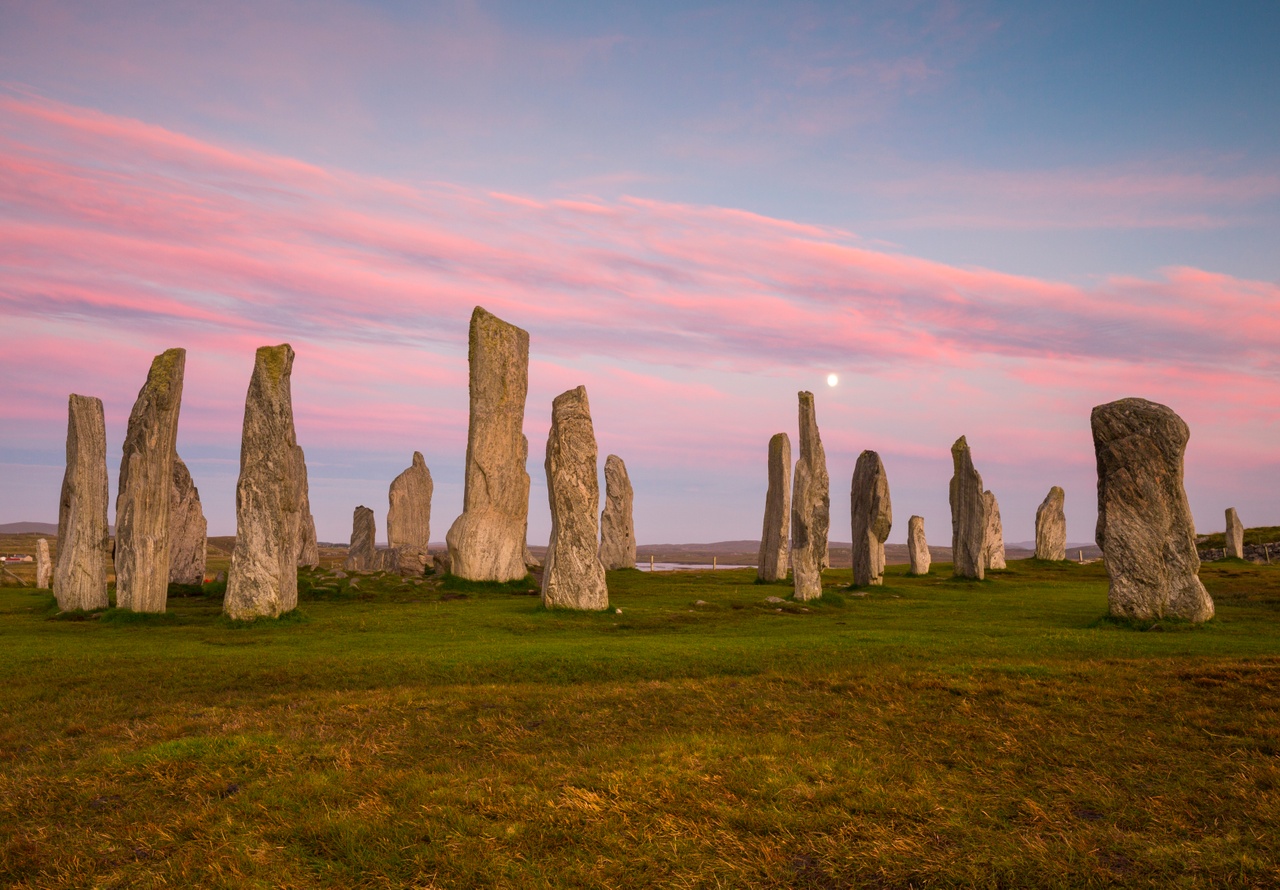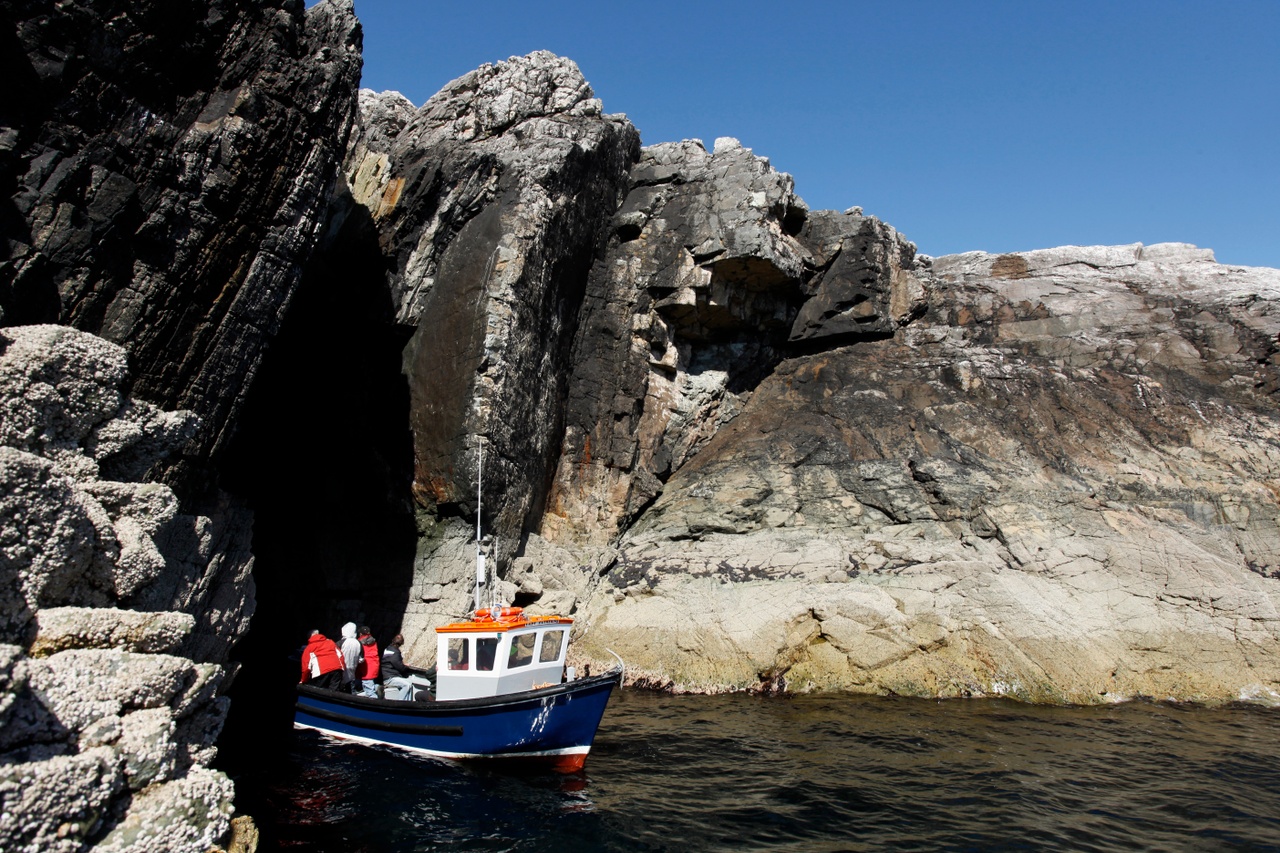
Population: 27,000 (approx.)
Five Fascinating Facts:
| 1. Despite its latitude, the Gulf Stream dominates the climate, meaning the region is comparatively mild |
| 2. The Callanish Stones, dating from about 2900 BC, are the finest example of a stone circle in Scotland |
| 3. The Butt of Lewis has been recorded as being the UK’s windiest spot |
| 4. The Outer Hebrides is home to more than 7,500 fresh water lochs, which is almost a quarter of all the lochs in Scotland |
| 5. The waters around Lewis were believed to be home to a water-spirit, or ‘Kelpie’, called Seonaidh, who could only be pacified by throwing a cup of beer into the sea |
Education:
The Outer Hebrides has a close knit community of schools, with many being amongst the most remote in all of the UK. Western Isles Council is responsible for four secondary schools across the islands: the Nicolson Institute in Stornoway (around 1,000 students), Sir E Scott School in Tarbert ( approx. 187 students), Sgoil Lionacleit in Benbecula (approx. 256 students) and Castlebay in Barra (approx. 52 students).

Scottish Gaelic is still a predominantly spoken language on the Outer Hebrides, with more than 50% of the population fluent in the language. Because of this, there are six primary schools where lessons are taught in both English and Gaelic. Bernera, Breasclete, Castlebay, Lochdar, Leverhulme Memorial and Sgoil an Taobh Siar have Gaelic Schools Status.
Find out more about the school system in Scotland
Find out more about universities in Scotland
Local industries:
Tourism is by far and away the mainstay industry in this region. It generates £65m in economic value for the islands, sustaining around 1000 jobs and is one of the key growth sectors in the islands’ economy. The islands receive 219,000 visitors per year; 930 accommodation providers are directly supported by tourism, and hundreds of other businesses depend on the visitor economy.
Other commercial activities centre on crofting, fishing and weaving which includes the manufacture of Harris Tweed and the area offers potential in renewable energy generation. Over two thirds of the island population now live on community-owned estates.
Find out more about working in Scotland
Transport:
The chain of islands span just over 150 miles, including 12 that are inhabited, stretching from Vatersay in the south to Lewis in the north. Each island is connected by a causeway, bridge or ferry making the journey through the islands a truly unique experience.

Travelling around Outer Hebrides can be achieved by driving, cycling or using public transport, and the islands are connected to the mainland by plane and ferry. The islands are more accessible than ever, with five UK airports reaching Stornoway (Lewis), Benbecula and Barra.
The outdoors:
Whether you enjoy sea-based activities, are much more comfortable on dry land, or prefer to get up into the mountains, the Outer Hebrides offer something for everyone. Fast and fun downhill mountain biking might be your thing – or exploring one of Scotland’s newest long-distance trails, the Hebridean Way.
Surrounded by stunning coastline, the opportunities for activities are endless. Think kayaking, surfing, kite surfing, sea life cruises, horse riding and even snorkelling with seals.
Offering breath-taking landscapes and ever-changing scenery, the islands are the perfect retreat for any outdoors enthusiast.
Leisure:
The islands’ natural playground provides so much to absorb any adventurous visitor. In the colder, darker and less weather-friendly winter months, numerous pubs and hotels provide a warm welcome.
The Lewis Sports Centre has a 25m pool with a movable floor, plus a children’s pool, featuring, Nessie the Friendly Monster, and a climbing wall, sports halls, running track and a soft play area. Likewise, the Isle of Harris Sports Centre has a 16.5m swimming pool, and a children’s pool with fountains and a waterfall, sauna/spa and gym.
Find out more about the outdoors and leisure on VisitScotland.com
Accommodation:
Homes and housing in the Outer Hebrides are a wide selection of flats, houses and remote country cottages – many of the latter are used for crofting.
Western Isles Council aims to fill hundreds of empty homes under the Scottish Empty Homes Partnership (SEHP), with the remaining cost to be covered by income from council tax on second homes. Official figures show there are 522 long-term empty properties in private ownership on the Outer Hebrides.